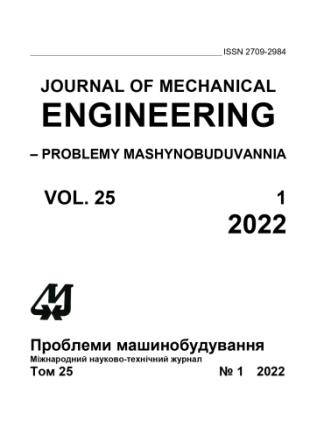Dynamic Instability of a Three-Layer Conical Shell with Honeycomb Structure Made by Additive Technologies
Abstract
A mathematical model of the dynamic instability of a three-layer conical shells with honeycomb structure made using additive technologies has been obtained. Dynamic instability is recognized as the interaction of the shell with a supersonic gas flow. The middle layer of the structure is a honeycomb that is homogenized into an orthotropic homogeneous medium. The top and bottom layers of the shell are made of carbon fiber. The vibrations of the structure are described by fifteen unknowns. Each layer of the structure is described by five unknowns: three projections of displacements of the layer middle surface and two rotation angles of the normal of the layer middle surface. The high-order shear theory is used to describe the deformation state of the structure. The relation between stresses and strains is expressed by a power expansion in the transverse coordinate up to its cubic terms. To obtain a system of ordinary differential equations describing dynamic instability, the method of given forms is used. To assess the dynamic instability, characteristic indicators are calculated by solving the generalized problem of eigenvalues. The natural vibrations of the structure are studied by the Rayleigh-Ritz method. The minimum natural frequency in the cantilevered shell is observed when the number of waves in the circumferential direction is 6. It is also observed in the shell clamped on both sides when the number of waves in the circumferential direction is 1. The dynamic instability properties of the trivial equilibrium state of the structure are studied using numerical simulation. Shells that are cantilevered and clamped on both sides are analyzed. It is shown that the minimum critical pressure is observed when the number of waves in the circumferential direction is 1. The dependence of the critical pressure on the Mach number and angle of attack is studied. It has been established that with an increase in the Mach number and angle of attack, the critical pressure decreases.
Downloads
Published
Issue
Section
License
Copyright (c) 2022 К. В. Аврамов, Б. В. Успенский, И. В. Библик

This work is licensed under a Creative Commons Attribution-NoDerivatives 4.0 International License.
All authors agree with the following conditions:
- The authors reserve the right to claim authorship of their work and transfer to the journal the right of first publication of the work under the license agreement (the agreement).
- Authors have a right to conclude independently additional agreement on non-exclusive spreading the work in the form in which it was published by the jpurnal (for example, to place the work in institution repository or to publish as a part of a monograph), providing a link to the first publication of the work in this journal.
- Journal policy allows authors to place the manuscript in the Internet (for example, in the institution repository or on a personal web sites) both before its submission to the editorial board and during its editorial processing, as this ensures the productive scientific discussion and impact positively on the efficiency and dynamics of citation of published work (see The Effect of Open Access).

